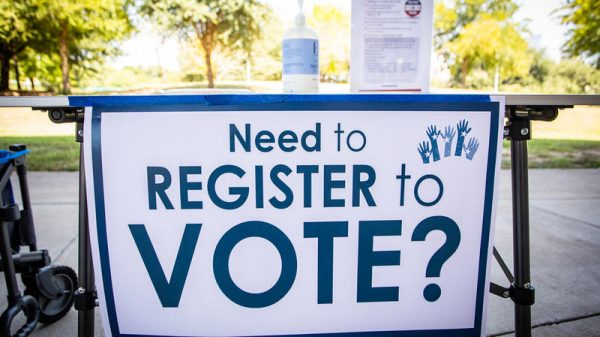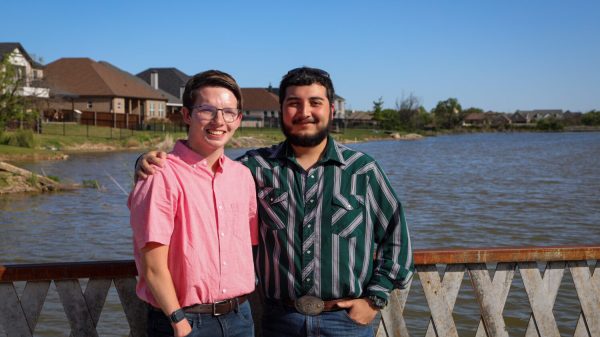
Kaleidoscope Scope: Nurse administering vaccine image
Gay and bisexual males should have the mpox vaccine even after the current outbreak has ended since they are at a high risk of contracting the virus.
The committee’s suggestion is now transmitted to the director of the Centers for Disease Control and Prevention, who must approve it before it can be distributed to American physicians as advice.
Last year, there were over 30,000 instances of mpox in the United States. This year, it decreased significantly to around 800. However, the CDC claims that every single case counts as an epidemic since the virus doesn’t normally spread in the United States.
Mpox, formerly known as monkeypox, is brought on by a virus that belongs to the same family as the smallpox virus. It is endemic to some regions of Africa, where individuals have contracted it by being bitten by rats or other tiny animals.
The virus was not known to spread quickly among humans, but in the spring and summer of 2022, instances increased in Europe and the United States, mainly among males who have sex with men. Although fatalities were uncommon, many patients endured uncomfortable skin sores for weeks.
Jynneos, a two-dose vaccination, became a mainstay in the United States. It is generally advised for males who engage in sexual activity with other men who have several partners, who have recently had an STD, or who are otherwise more likely to have an infection through sexual contact.
Of the 2 million Americans who are eligible, only around 500,000 have received the necessary two doses of the vaccination, according to CDC authorities.
According to CDC authorities, the new guideline can help to warn individuals that the virus is still present and that it is still possible to contract it when traveling abroad.
One to four new cases are reported on average each day in the United States, however, some people may not be receiving a diagnosis, according to CDC experts. Since the mpox outbreak last year, there have been 54 documented deaths in the United States, including two in September.
In San Francisco, there were over 800 cases last year, but in the first half of this year, there was just one case on average per month. Seven instances were reported in August, 20 the next month, and at least ten so far this month.
Mpox Vaccinations: Jynneos Vaccine
The JYNNEOS vaccination is approved for two doses spaced 28 days (4 weeks) apart.
A 0.5mL injection volume is used in the standard regimen’s subcutaneous (subcut) form of administration. The FDA-approved dosage regimen is the accepted protocol. The regular regimen has also been approved for adults older than 18 since August 9, 2022, under an Emergency Use Authorization.
In accordance with an Emergency Use Authorization that was given on August 9, 2022, an alternate regimen may be utilized by individuals older than 18 years. A 0.1mL injection volume is used in the permitted alternative regimen’s intradermal (ID) method of administration. When possible, the alternate regimen is favored since it may increase the number of JYNNEOS vaccination doses accessible by up to fivefold. According to the findings of clinical research, the conventional subcutaneous dosage was immunologically superior to the lower intradermal dose. Recent studies demonstrate comparable vaccination efficacy for intradermal and subcutaneous administration.
14 days following the second dose of the JYNNEOS vaccine is when peak immunity is anticipated to occur. After receiving one or two doses of JYNNEOS, immunity may last for a while.
Recommended Interval: The second dose of the JYNNEOS vaccination should be administered 28 days (4 weeks) following the first dose. The second dosage may be administered up to 7 days after the minimum interval of 28 days (i.e., up to 35 days after the first dose), according to the clinical research data that is currently available.
Minimum Interval: The vaccine’s manufacturer cautions against administering the second dosage before the requisite 28-day interval. The “grace period,” which would be a minimum of 24 days following the first dosage, is known as the exception and may be up to 4 days before the required minimum interval of 28 days. Doses of vaccines shouldn’t be given before the required gap. However, if the second dosage is accidentally given before the required gap, it might not be necessary to repeat it.
Maximum Interval: If the second dosage is not given at the specified time, it should be given as soon as feasible in accordance with ACIP’s general best practices. If there is a significant time gap between doses, the series does not need to be restarted or expanded.
After either the regular regimen or the alternate regimen, there is little chance of experiencing major side effects. Injection-site responses were the most often reported adverse events, according to a review of past vaccination Adverse Event Reporting System (VAERS) data from influenza vaccination formulations that were delivered intradermally. The alternate plan is probably workable and acceptable.
The data that supported the approved use of JYNNEOS and historical data on the use of smallpox vaccination in the pediatric population serve as the foundation for the evidence supporting the authorization of the administration of JYNNEOS via the subcutaneous route to those less than 18 years of age.




![Tyson Foods Plant [Photo: Food Manufacturing]](https://southarkansassun.com/wp-content/uploads/2023/08/iStock_1185520857__1_.5e441daa51cca-600x337.jpg)








![Silverado Senior Living Management Inc. [Photo: Los Angeles Times]](https://southarkansassun.com/wp-content/uploads/2023/10/download-6-4-600x337.jpg)

![China's Wuhan Institute of Virology [Photo: Nature]](https://southarkansassun.com/wp-content/uploads/2023/09/d41586-021-01529-3_19239608-600x337.jpg)














